In this Article
- Burn Depth Classification (Chart + Download)
- Superficial Burns
- Partial Thickness Burns: Superficial, Mid, and Deep Dermal
- Full Thickness Burns
- Flashcards on Burns
- References & Contributions
5 Key Points on Burn Depth Assessment
1. Burn depth is classified into superficial, partial, and full-thickness.
2. Assessment focuses on colour, pain, blanching, blisters, sensation.
3. Superficial burns are like sunburn - hot, red, painful, no blisters.
4. Partial-thickness burns have blisters as the dermis is now involved.
5. Full-thickness burns can be charred, leathery, and insensate.
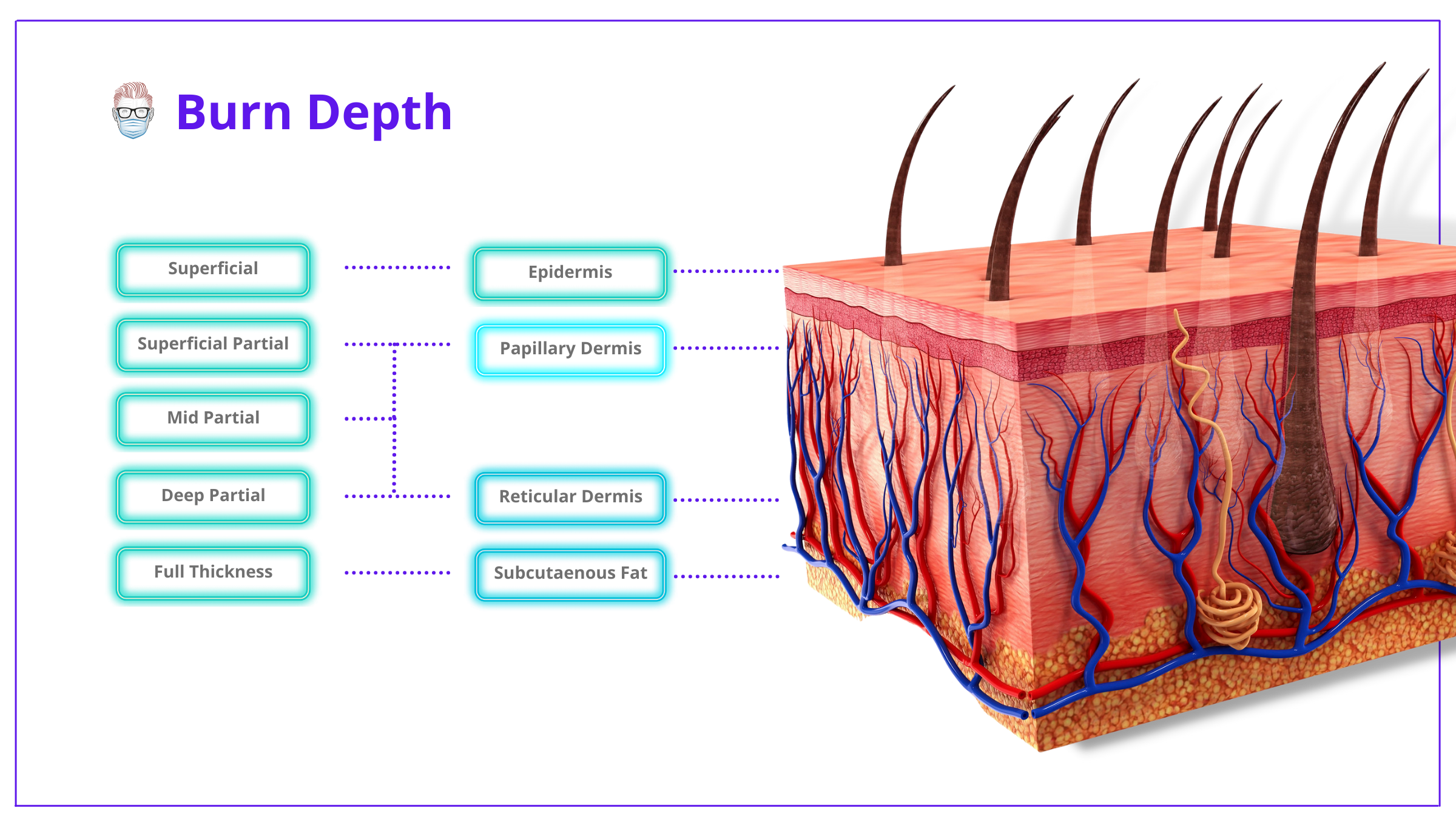
Burn Depth Classification
Burn depth and total body surface area of a burn are two key aspects of a burn assessment. The assessment of burn depth, and as such, the estimation of whether a burn wound is expected to heal on its own within 21 days, is one of the most important roles of the burn surgeon4.
Currently, the determination of burn depth based on clinical examination is only 70% accurate1. It can be difficult to effectively stratify burn wounds.
A burn is a dynamic process for the first few days and a burn that appears shallow on day 1 may appear deep by day 32. A deeper burn may require more fluid resuscitation.
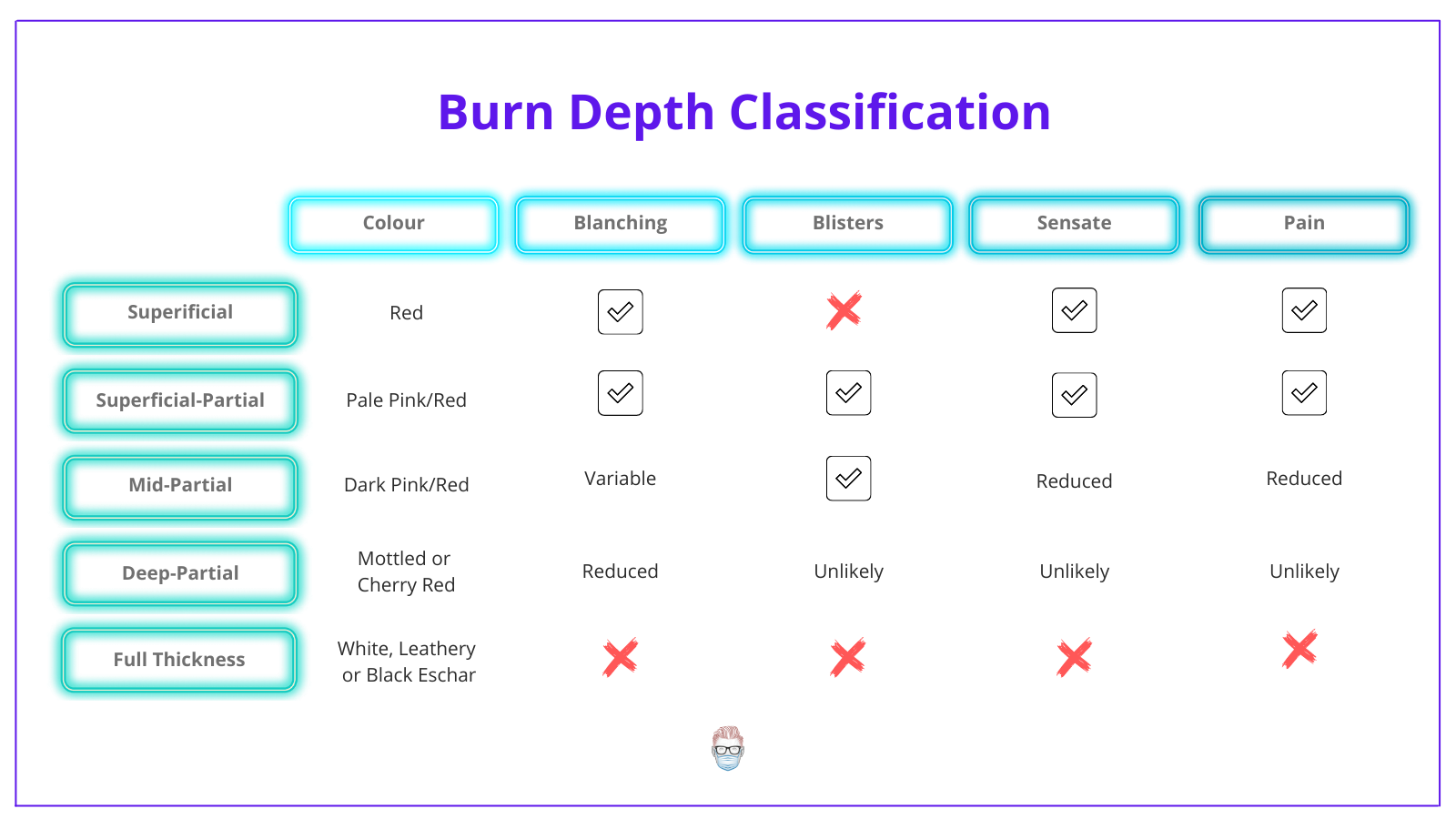
Despite the plethora of technological advances, the most common technique for diagnosing burn depth remains the clinical assessment of an experienced burn surgeon. A clue is often in the history - type of burn and immediate first aid.
You can download this burn depth chart with the link below.
Superficial Burn Depth (1st Degree Burns)
A superficial burn (1st degree) has the following characteristics:
- Involve the epidermis
- Warm, painful, red/erythematous, soft, and blanching.
- No blistering.
- A typical example is a sunburn.
- Healing by rapid re-epithelialization3
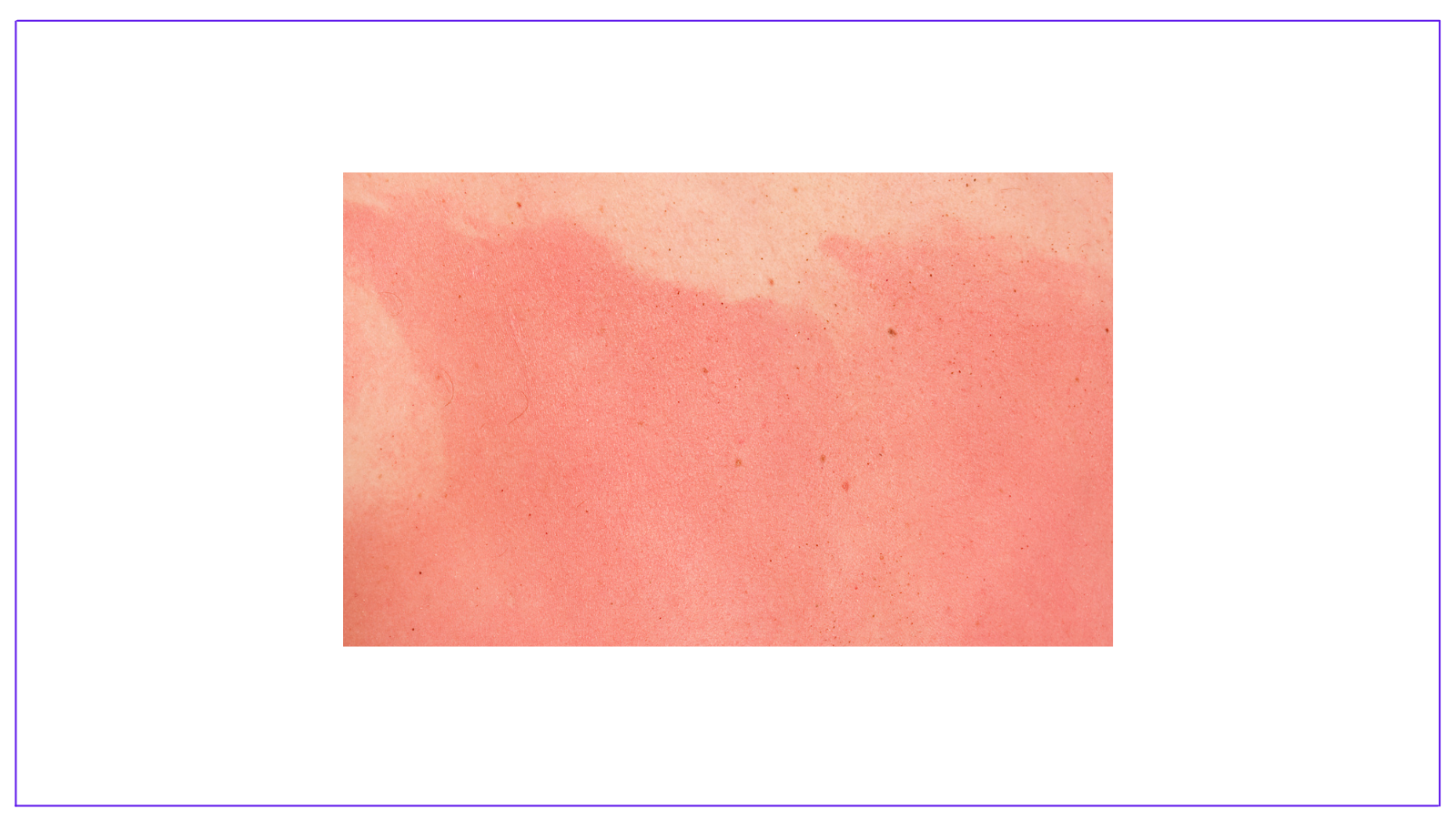
Partial Thickness Burn Depth (2nd Degree Burns)
Superficial dermal partial thickness
A superficial partial-thickness burn (2nd degree) has the following characteristics:
- Involves epidermis and into the papillary dermis
- Painful, red, blistered, moist, soft, and blanching when touched.
- When blistered are deroofed, the skin is moist, red, and hypersensitive.
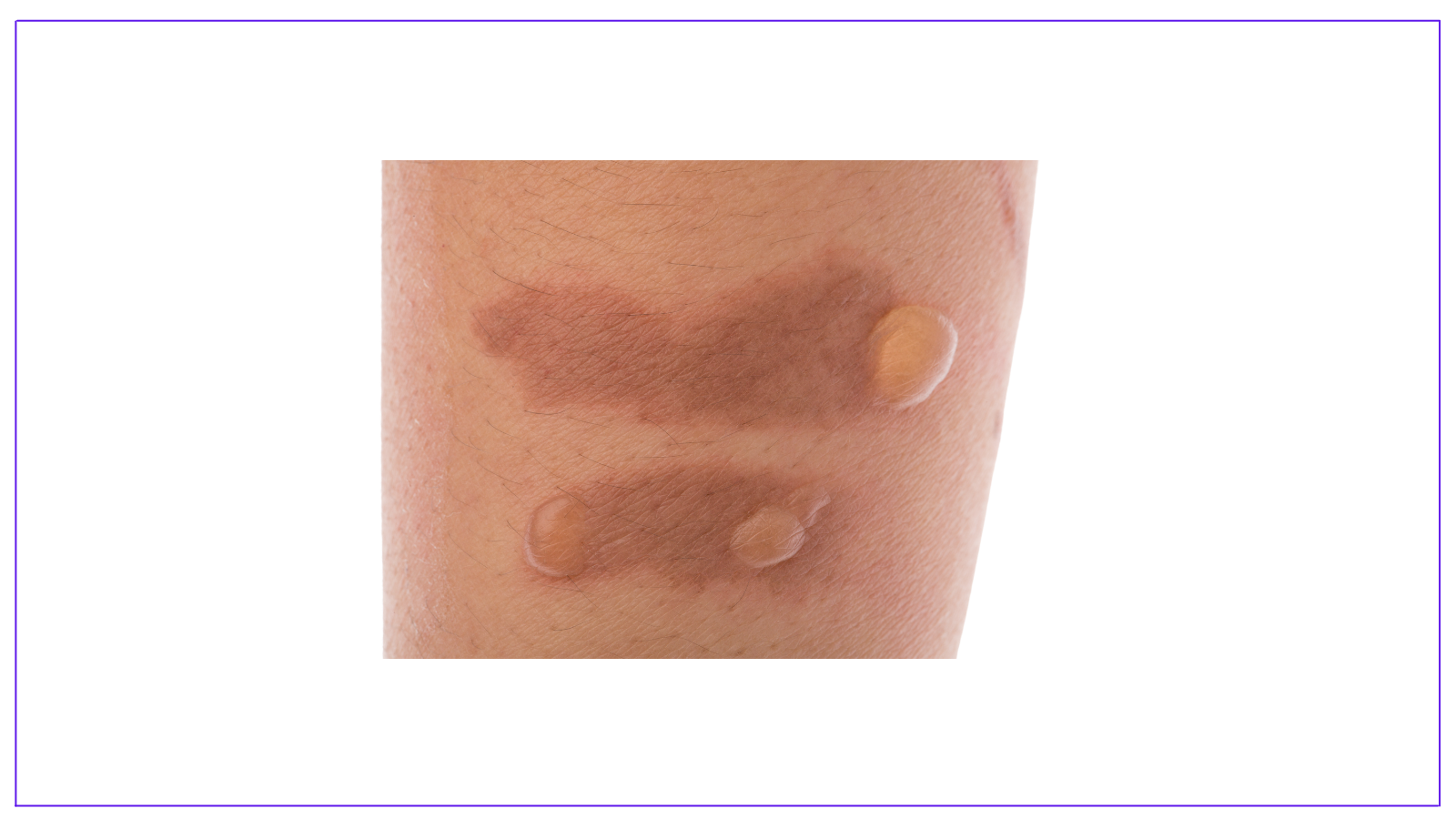
Mid dermal partial thickness
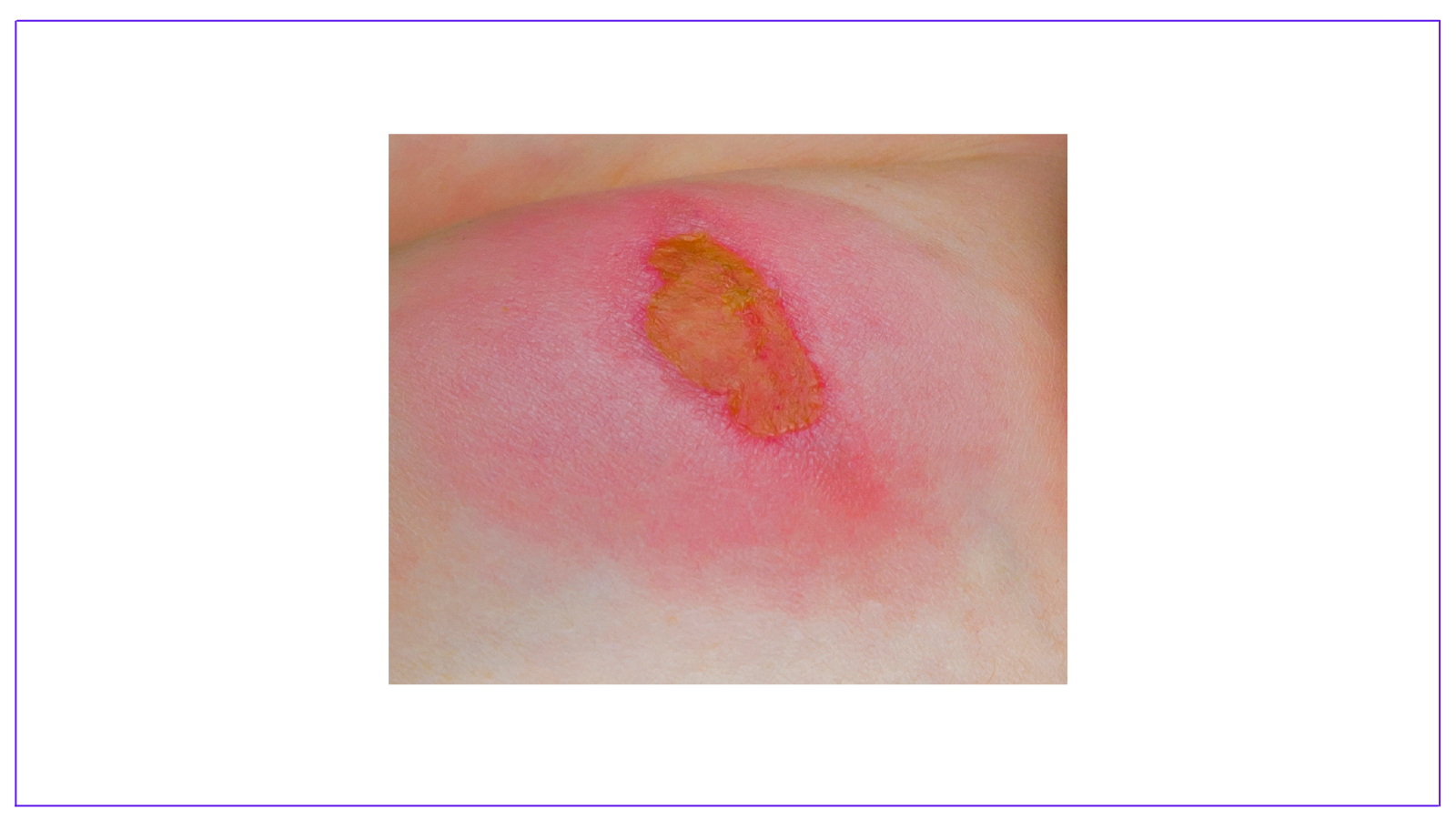
Deep dermal partial thickness
A deep partial-thickness burn (2nd degree) has the following characteristics:
- Involves epidermis and into the reticular dermis
- It can also blister but is less likely than a superficial dermal burn.
- The wound surface is usually a mottled pink immediately following the injury and overtime may progress to a whiter and drier wound.
- Blanching is minimal or non-existent (due to capillary damage)
- Reduced sensation and less pain.
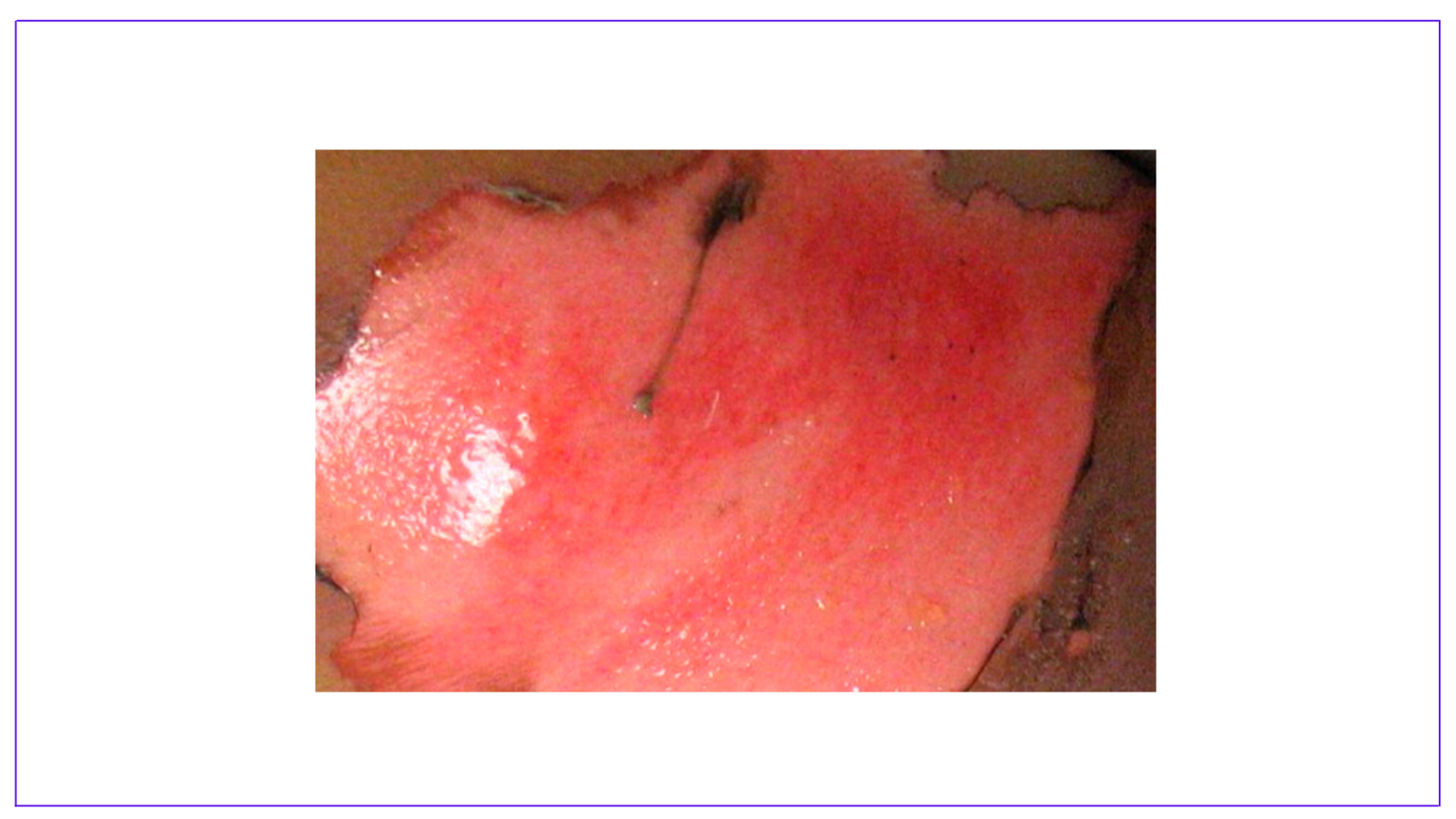
Full Thickness Burn Depth (3rd Degree Burns)
A full-thickness burn (3rd degree) has the following characteristics:
- Involve epidermis, dermis, and into the subcutaneous fat or deeper.
- Minimal or no pain
- Colour can be white, brown, or charred
- Feel firm and leathery with no blanching.
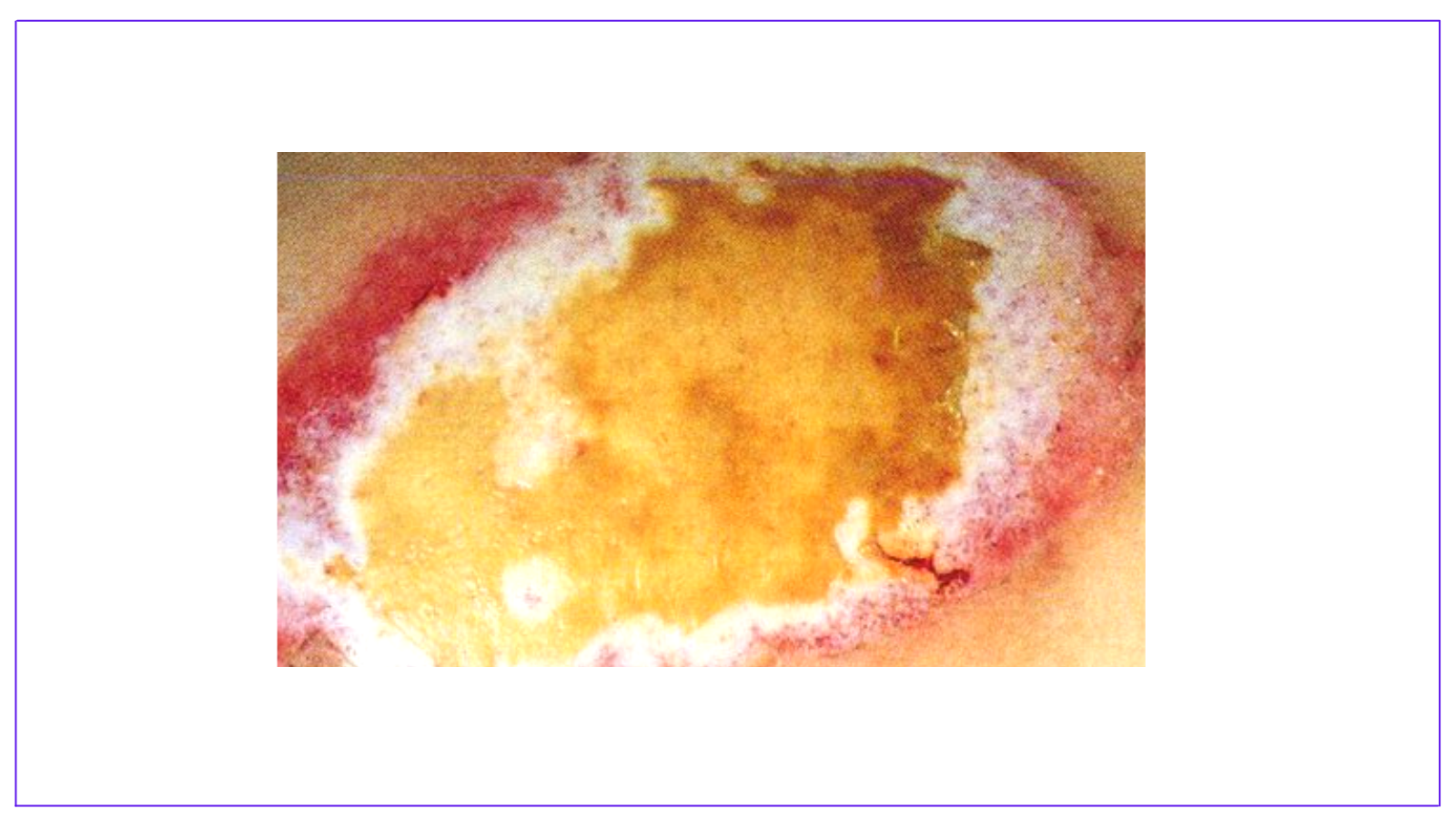
Flashcards on Burn Depth
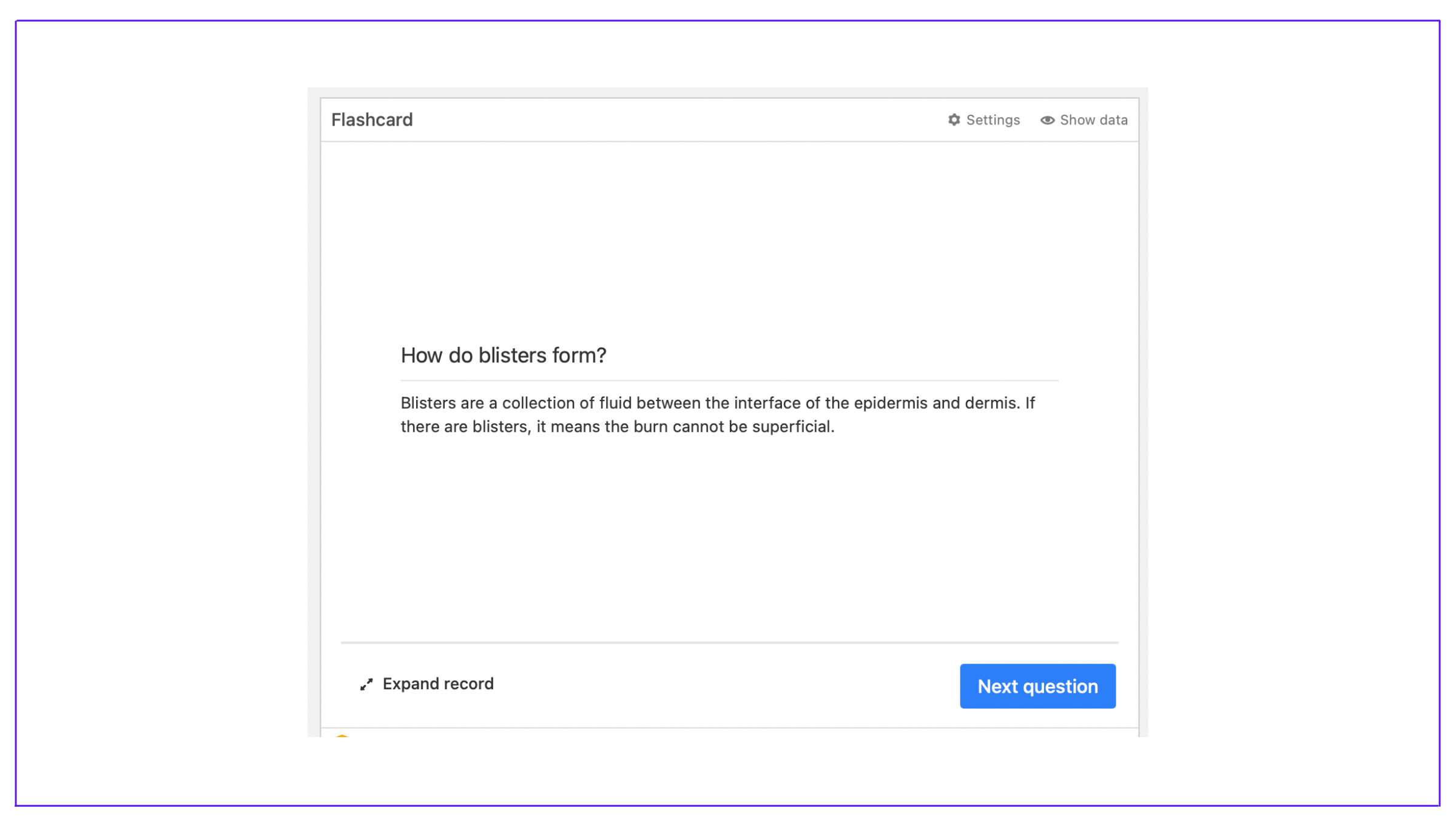
References on Burn Depth
- Bezuhly, Michael F.R.C.S.C.; Fish, Joel S. F.R.C.S.C. Acute Burn Care, Plastic and Reconstructive Surgery: August 2012 - Volume 130 - Issue 2 - p 349e-358e doi: 10.1097/PRS.0b013e318258d530
- Heimbach D, Engrav L, Grube B, Marvin J. Burn depth: a review. World J Surg. 1992 Jan-Feb;16(1):10-5. doi: 10.1007/BF02067108. PMID: 1290249.
- Monstrey S, Hoeksema H, Verbelen J, Pirayesh A, Blondeel P. Assessment of burn depth and burn wound healing potential. Burns. 2008 Sep;34(6):761-9. doi: 10.1016/j.burns.2008.01.009. Epub 2008 Jun 3. PMID: 18511202.
- Amín D. Jaskille, MD, Jeffrey W. Shupp, MD, Marion H. Jordan, MD, James C. Jeng, MD, Critical Review of Burn Depth Assessment Techniques: Part I. Historical Review, Journal of Burn Care & Research, Volume 30, Issue 6, November-December 2009, Pages 937–947, https://doi.org/10.1097/BCR.0b013e3181c07f21


